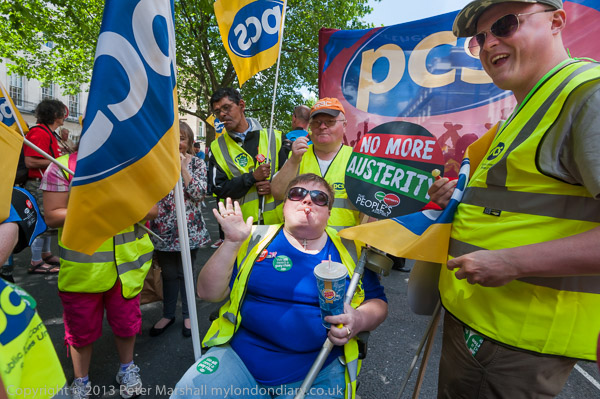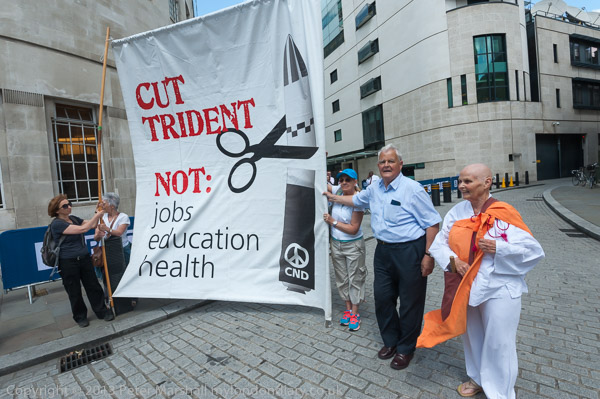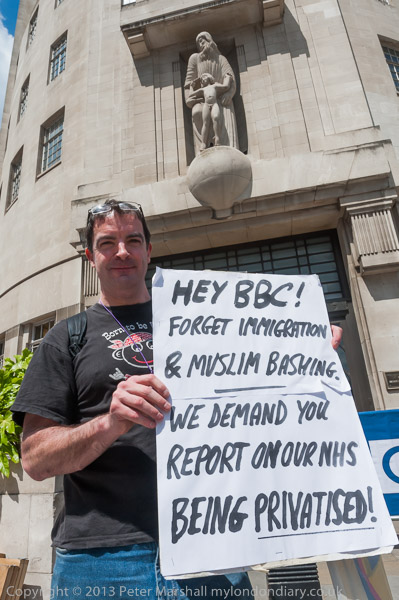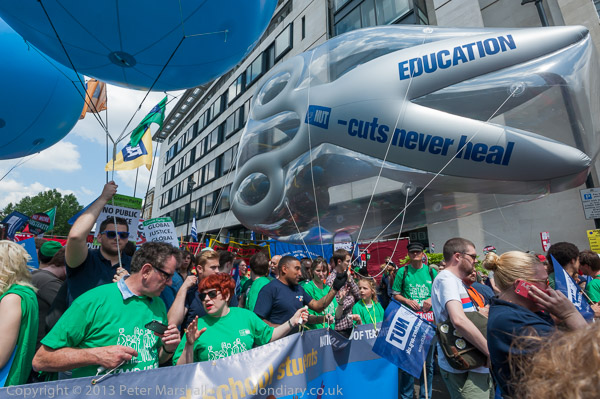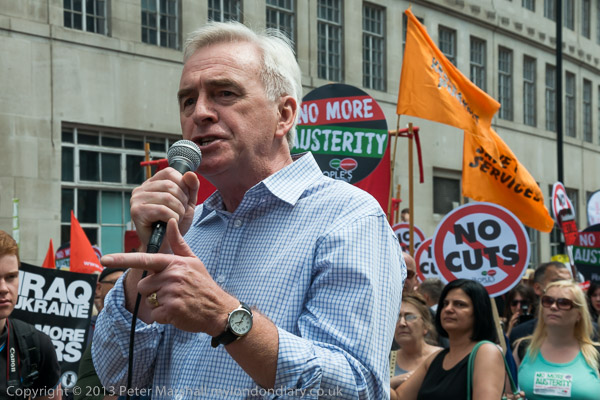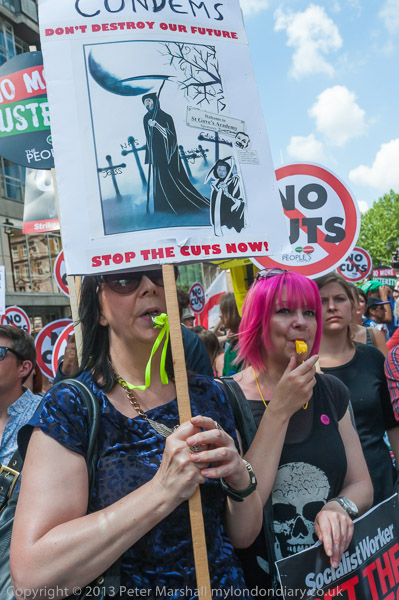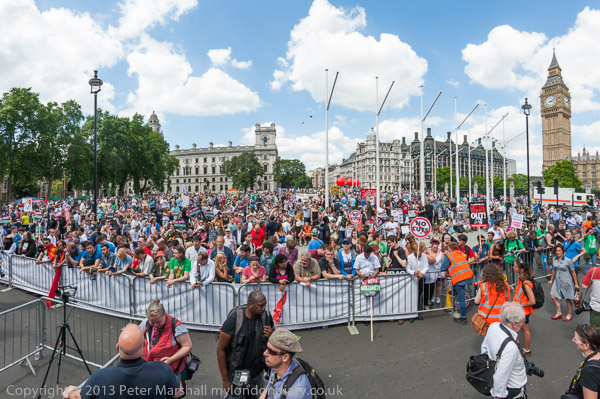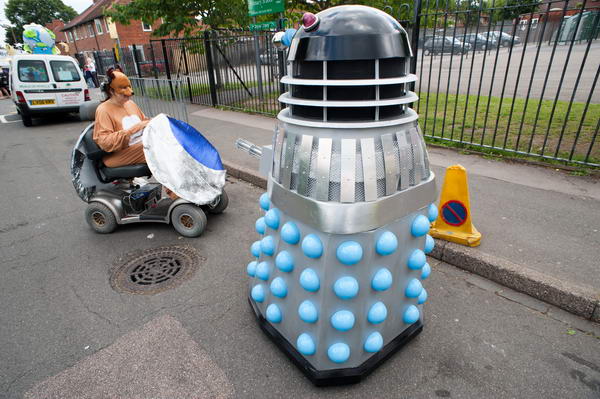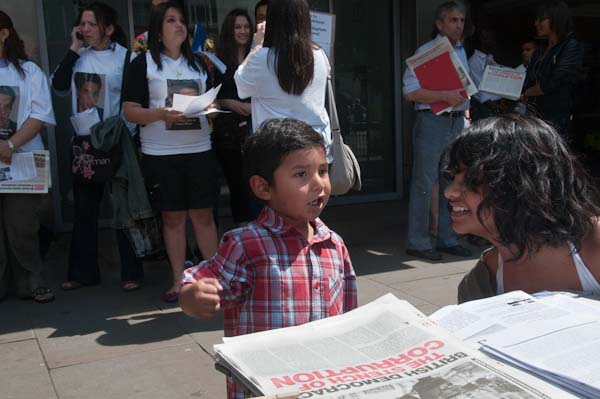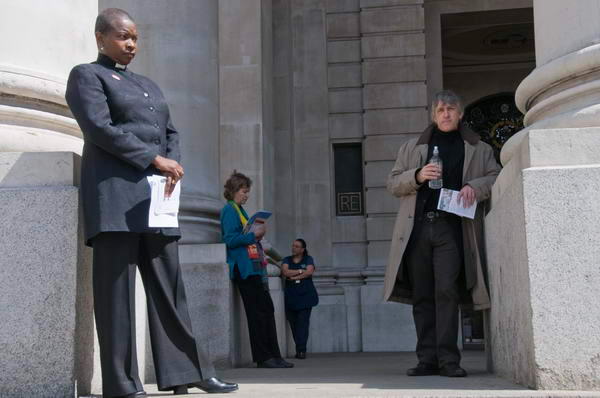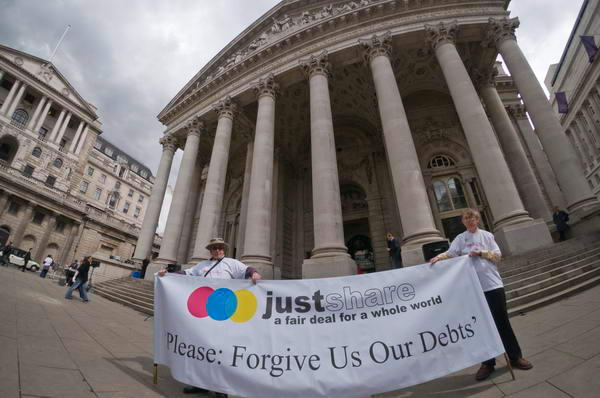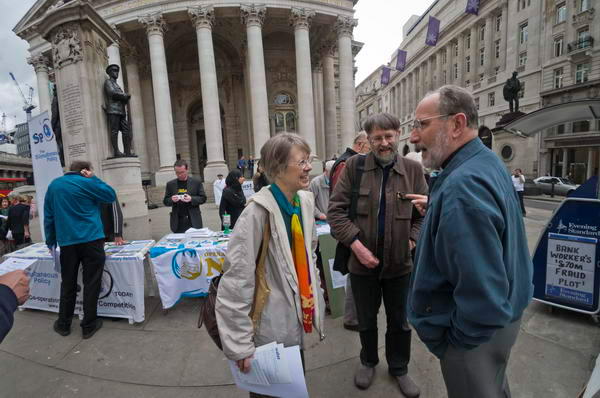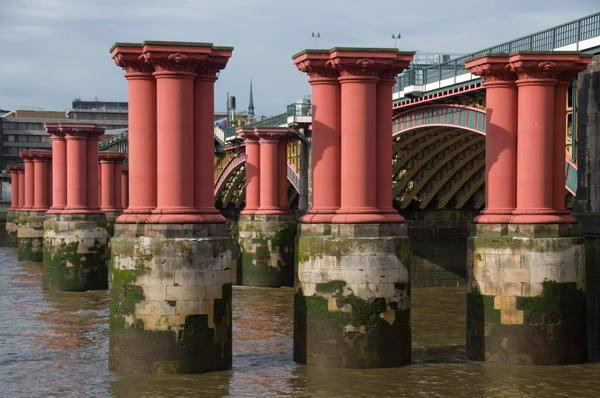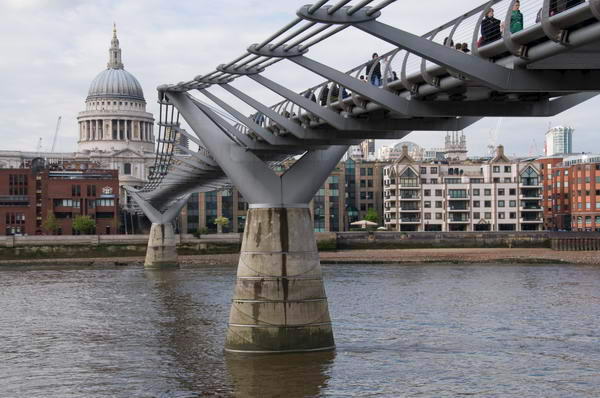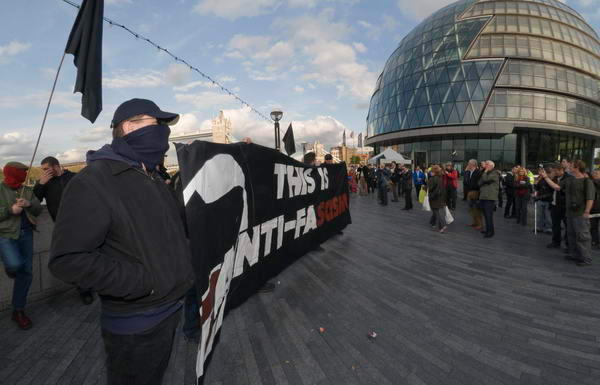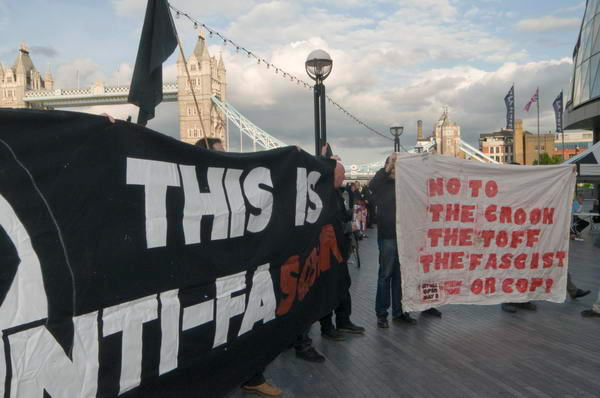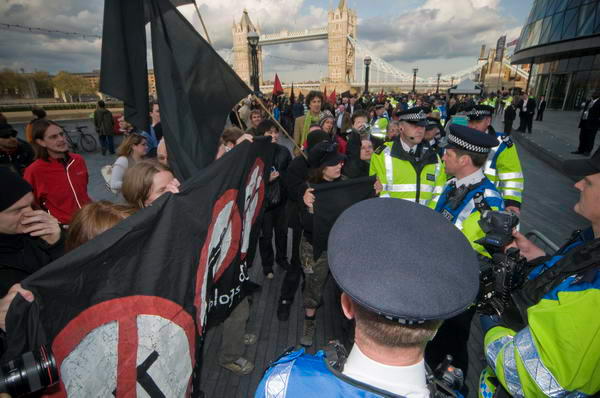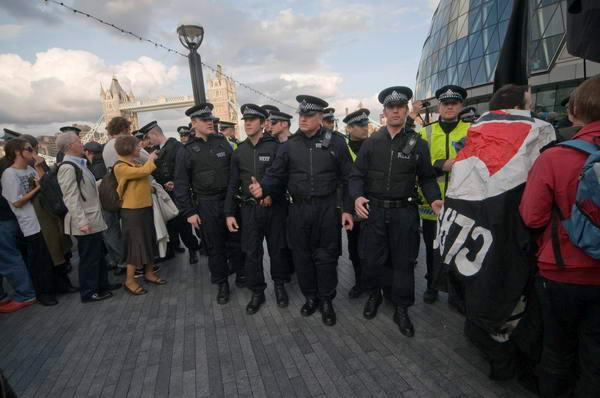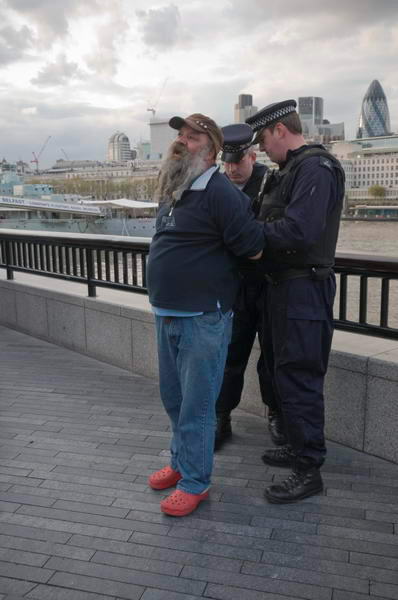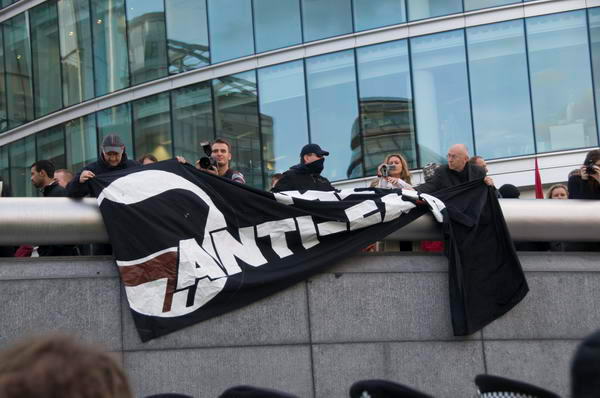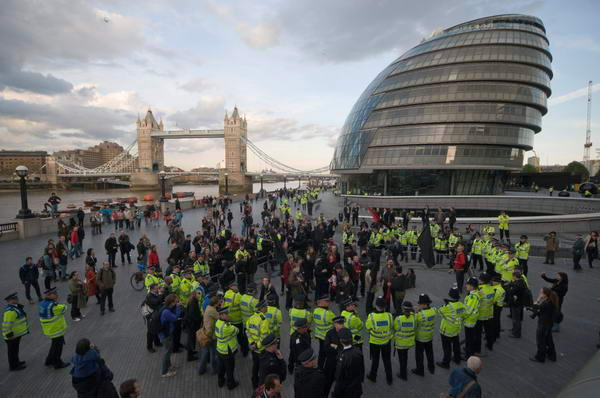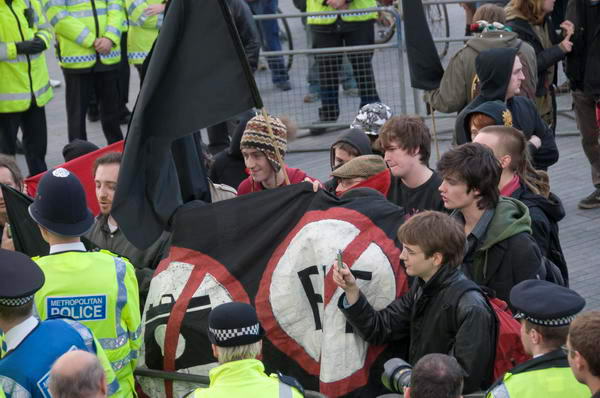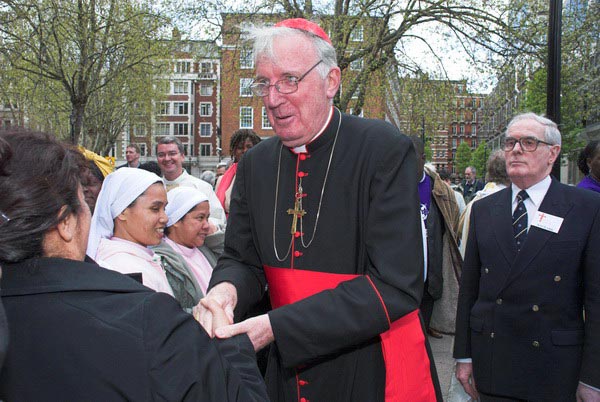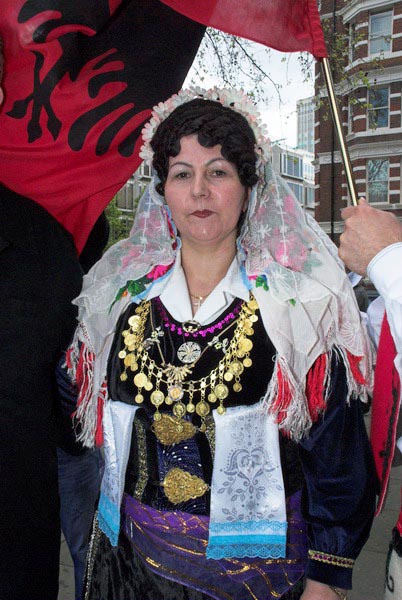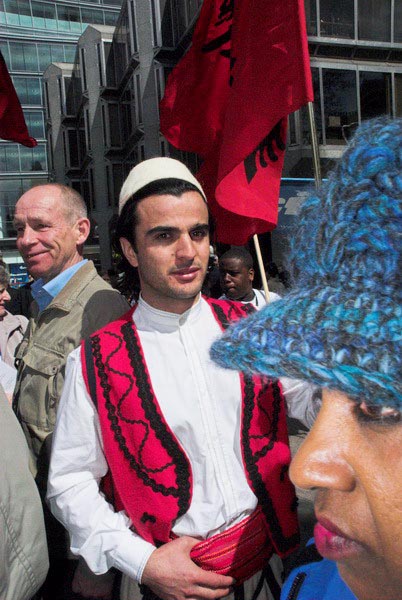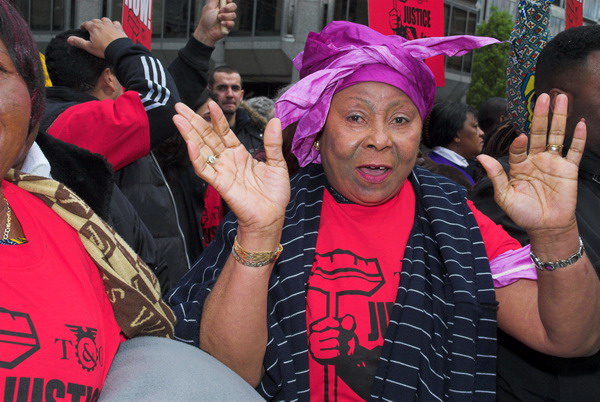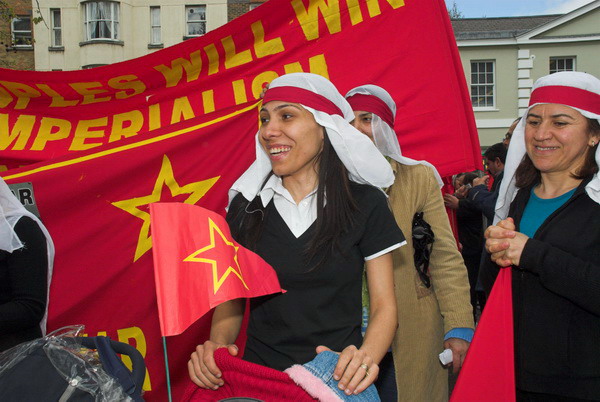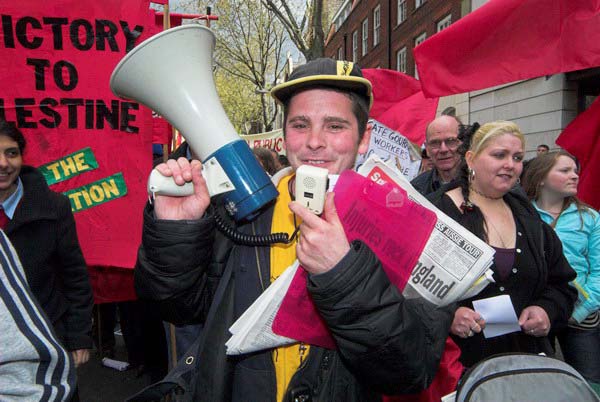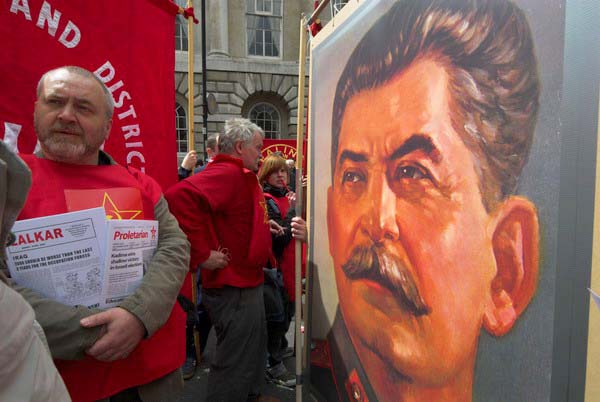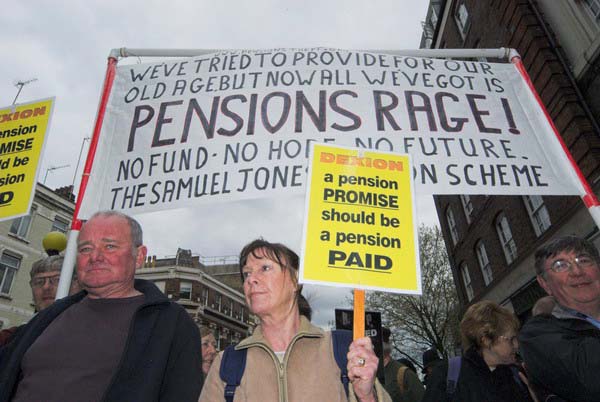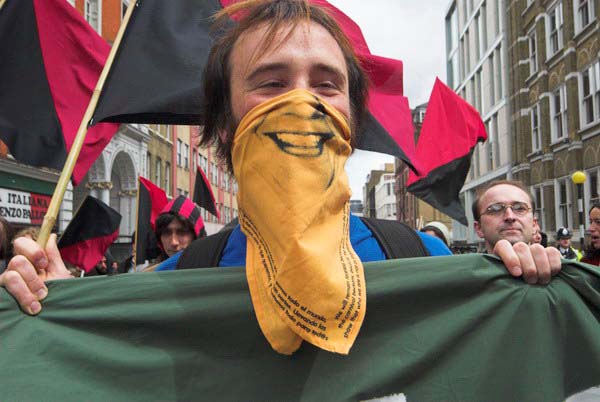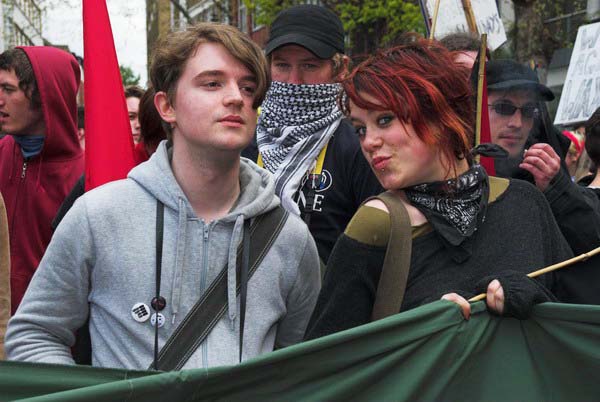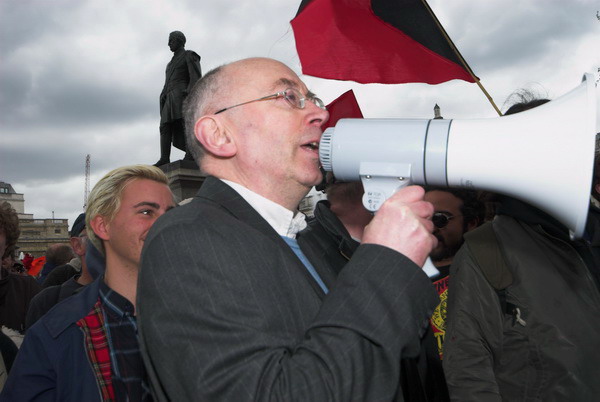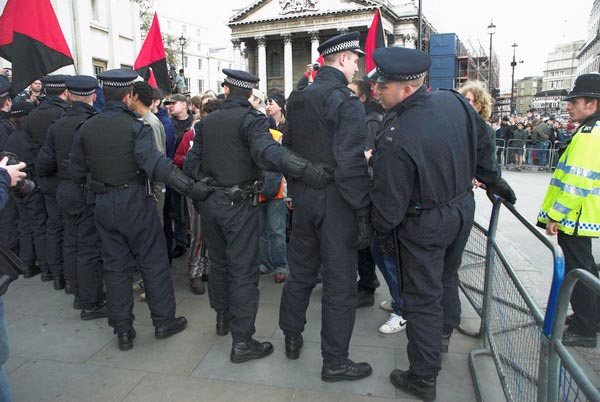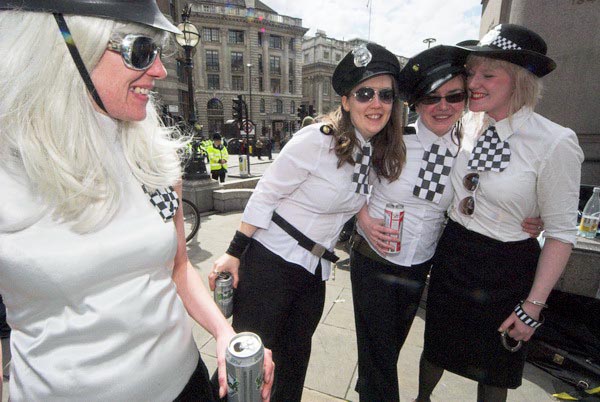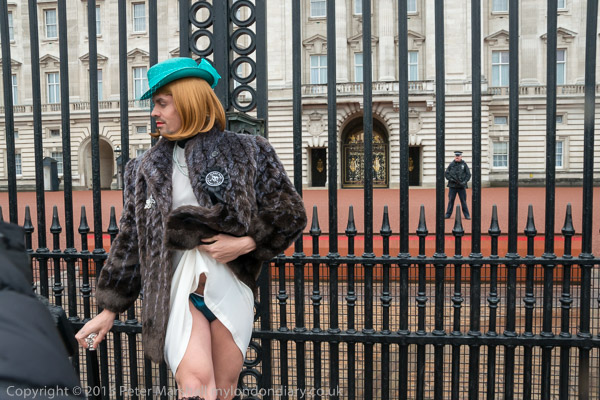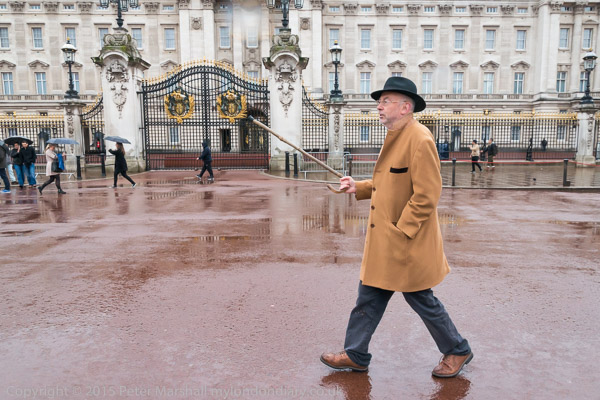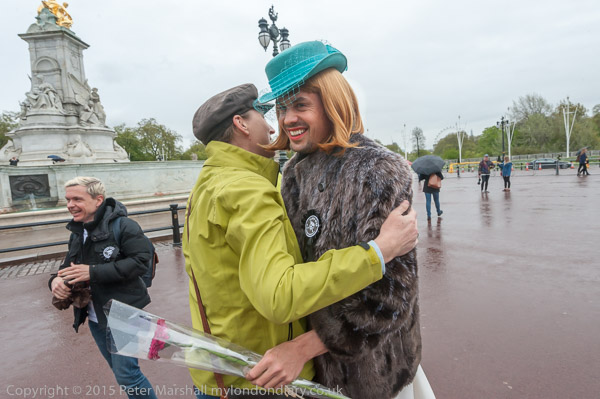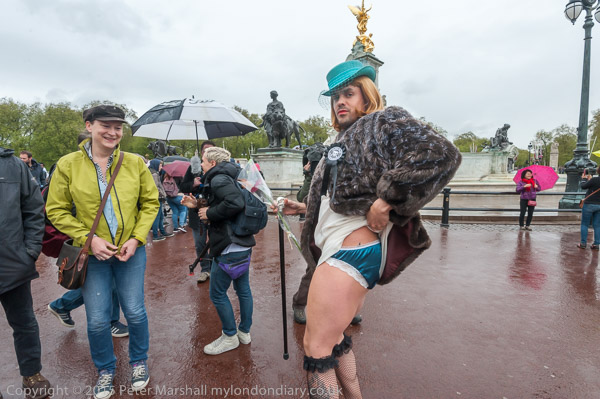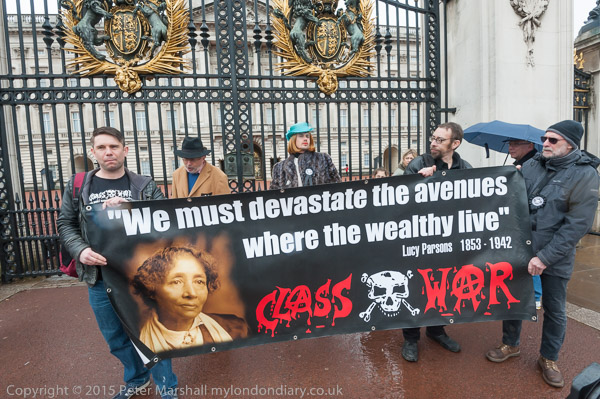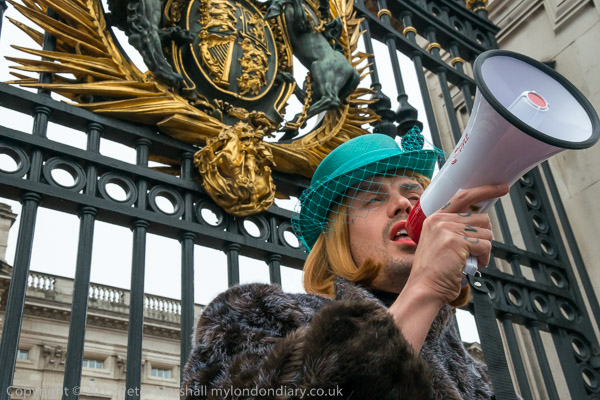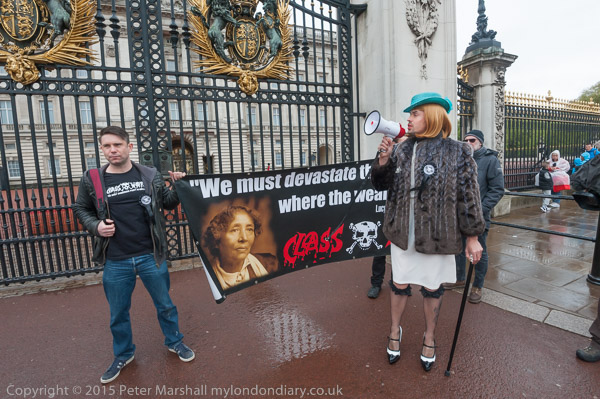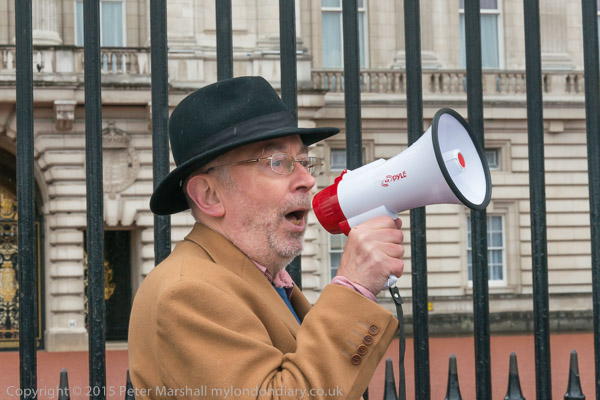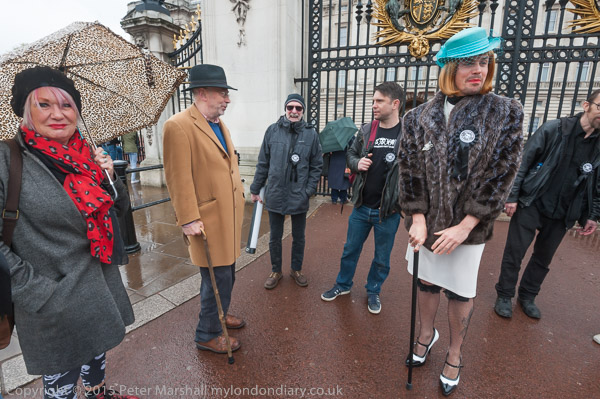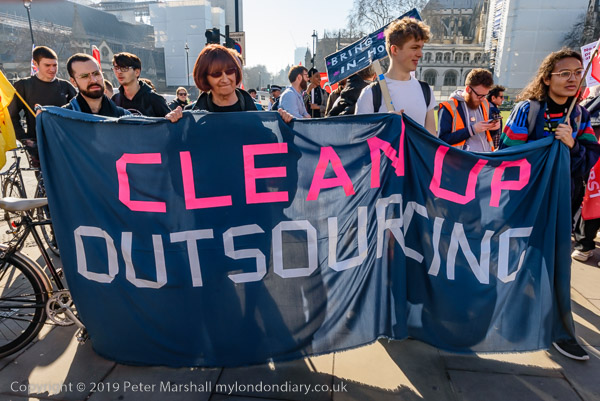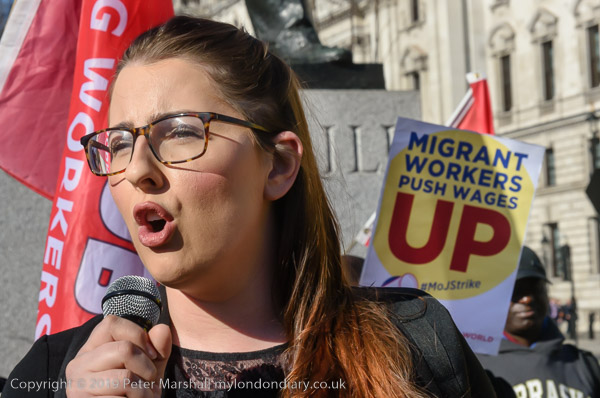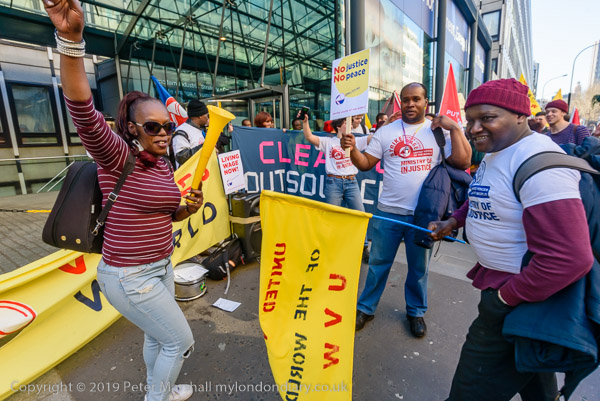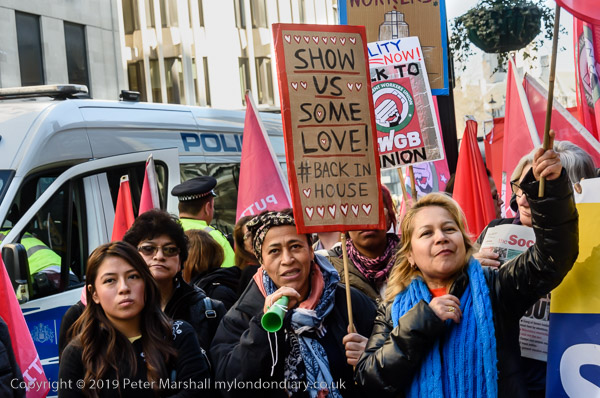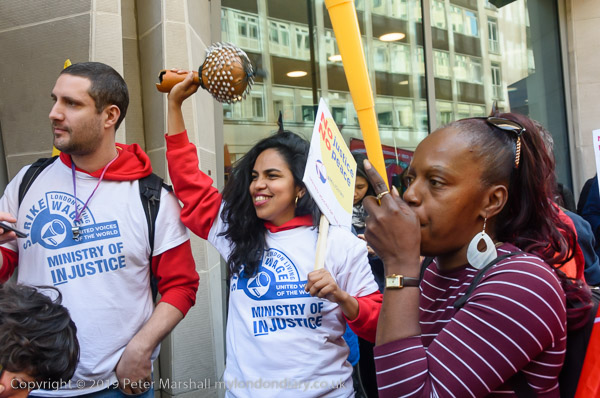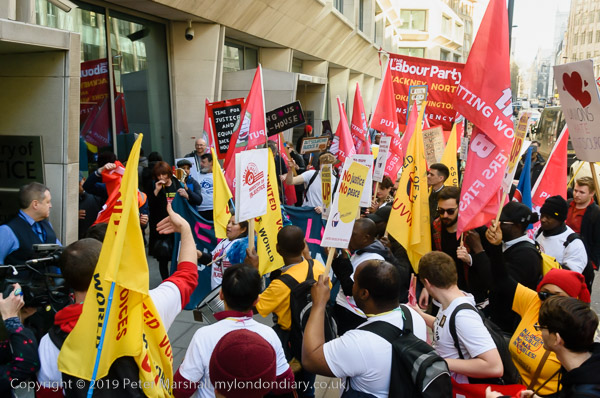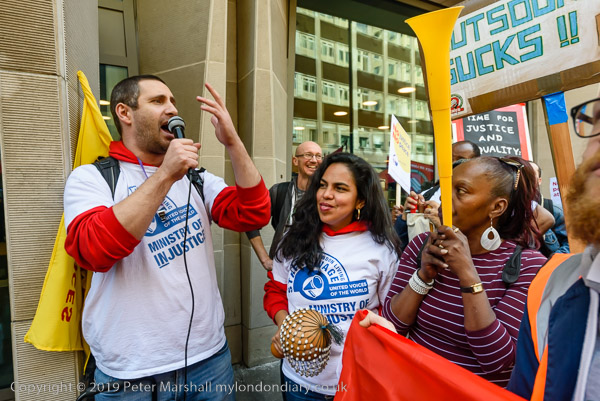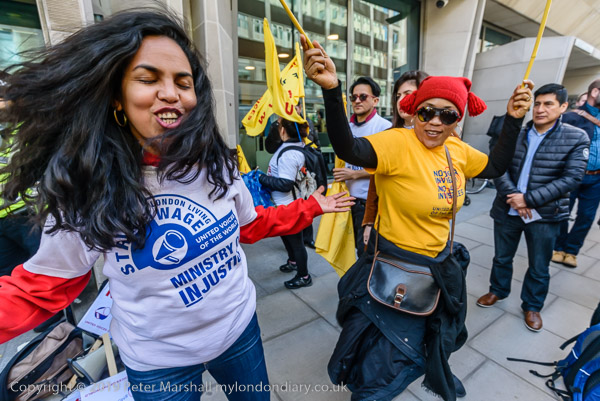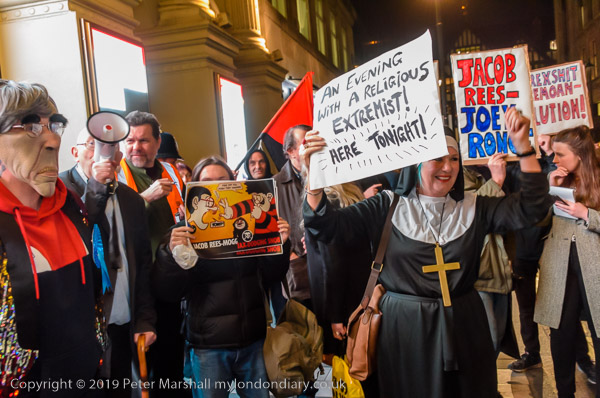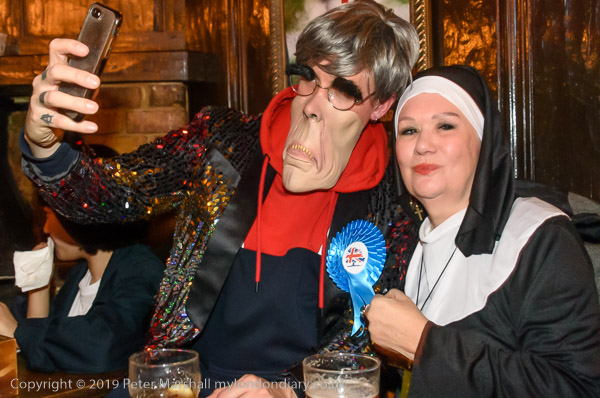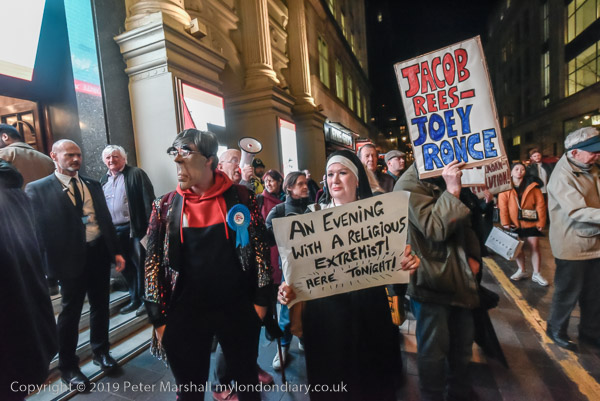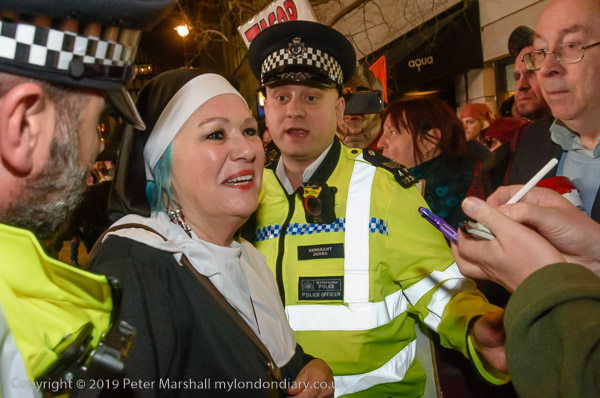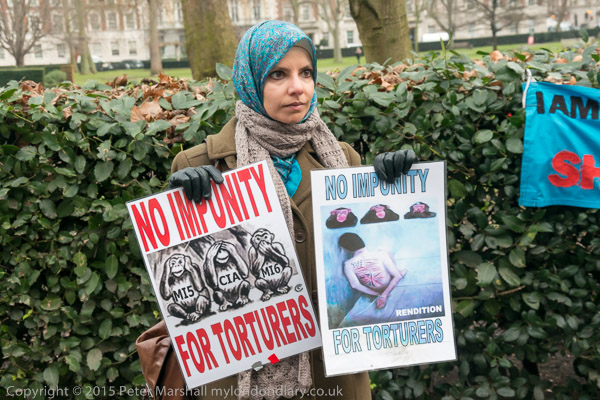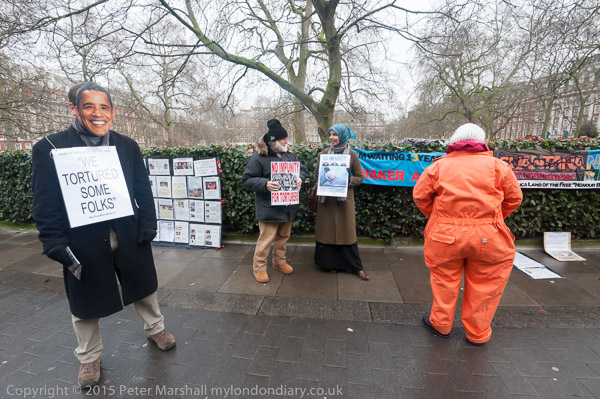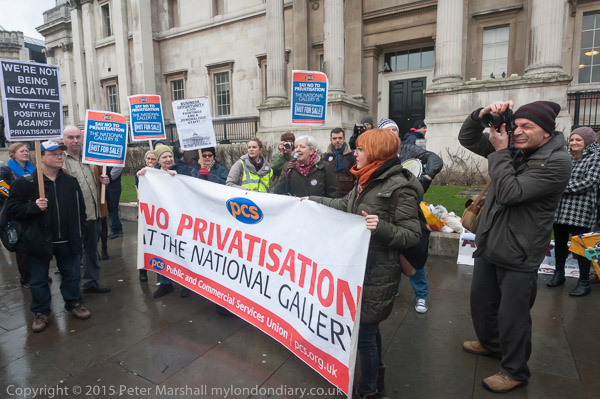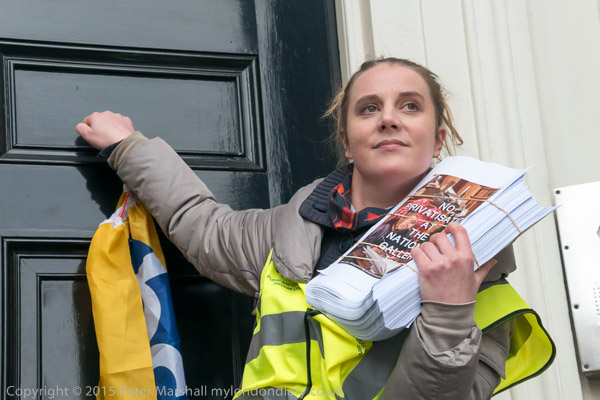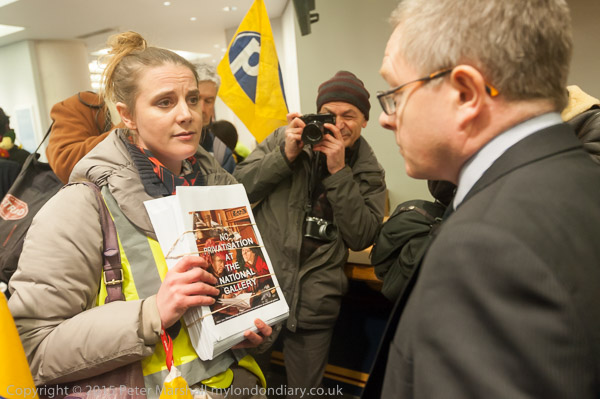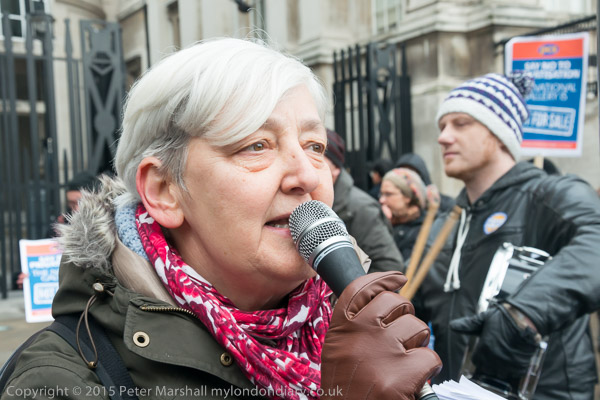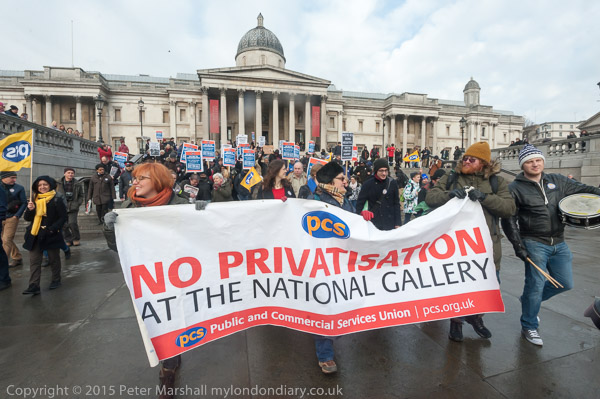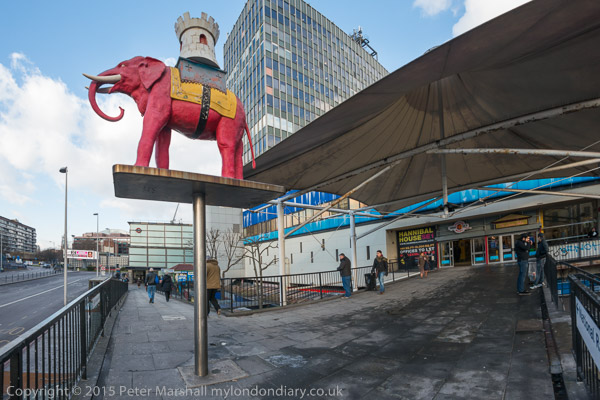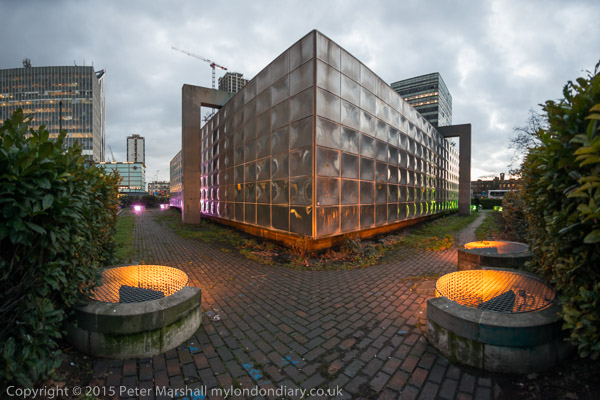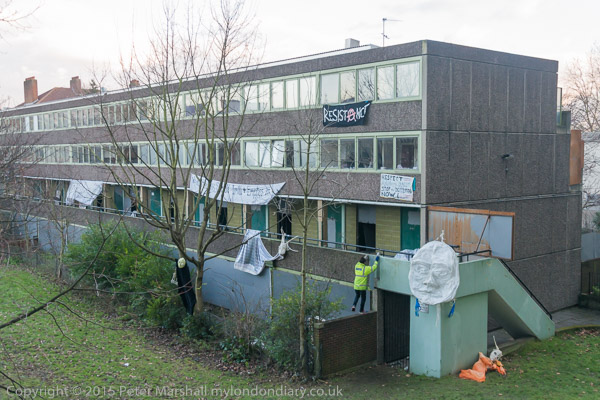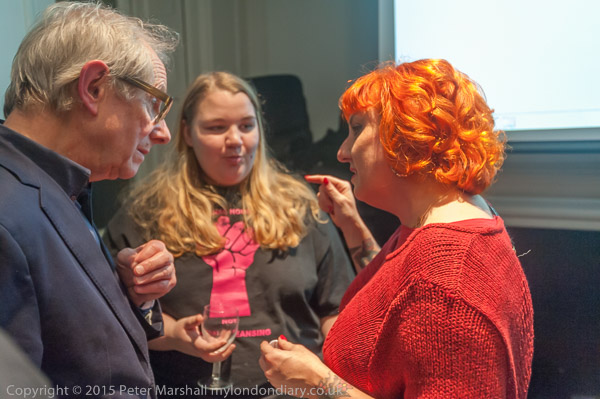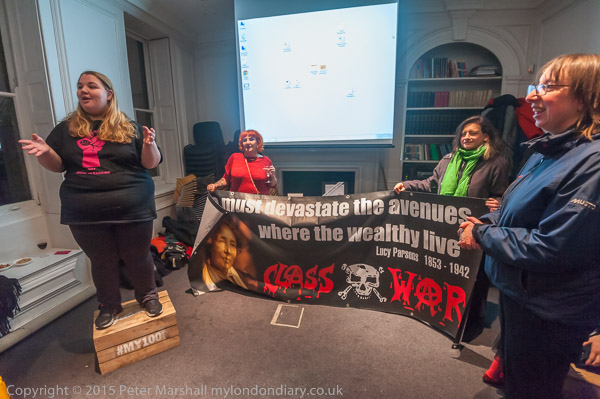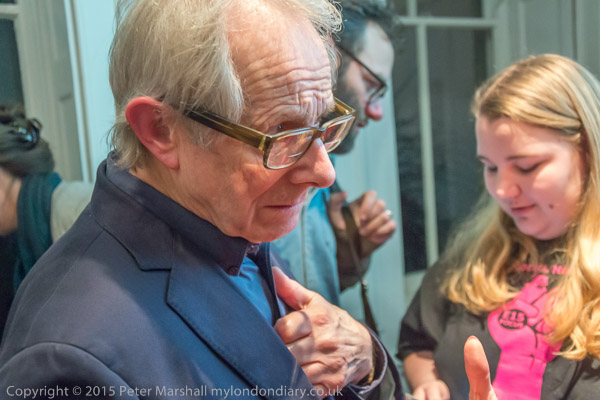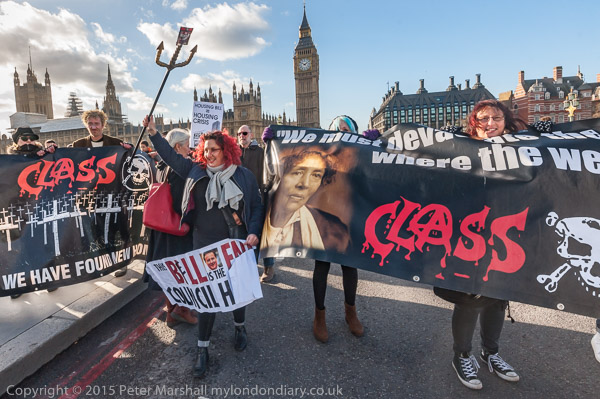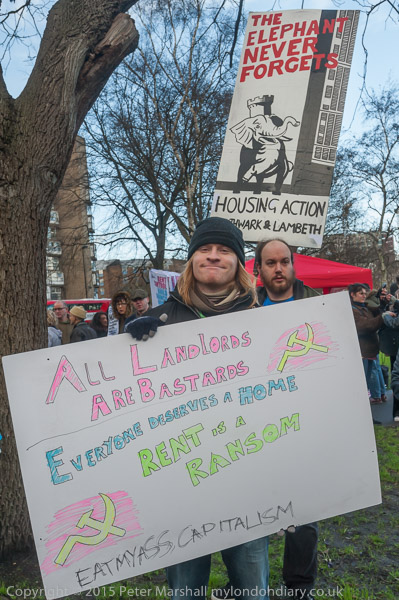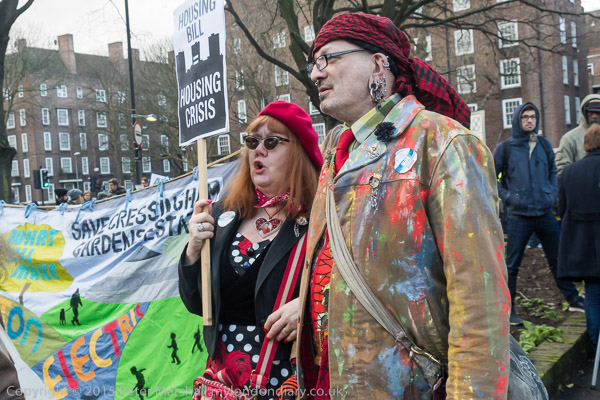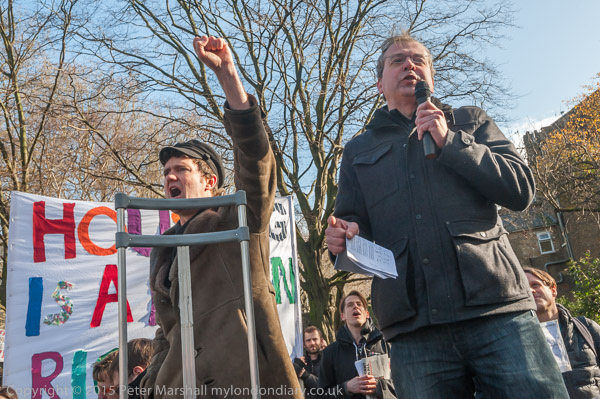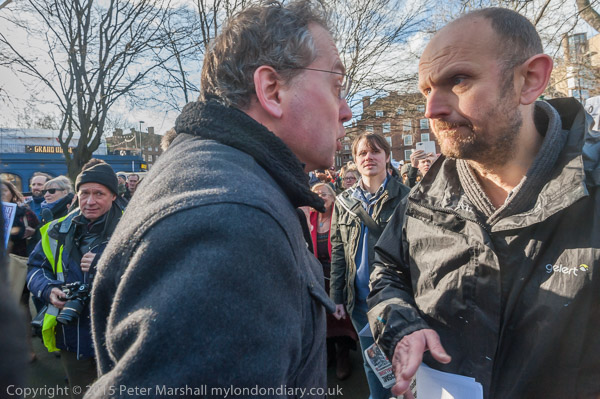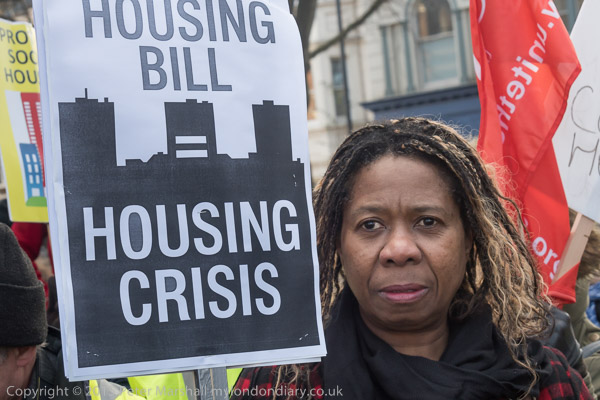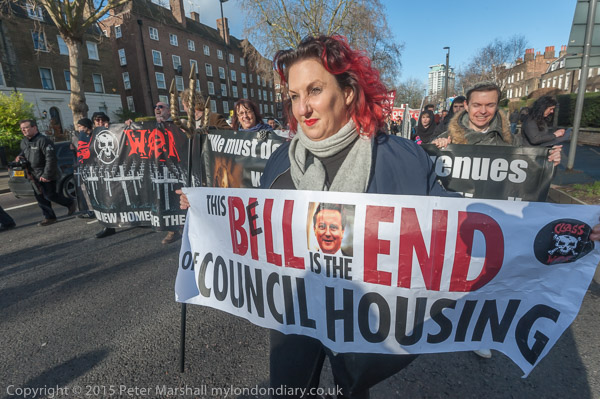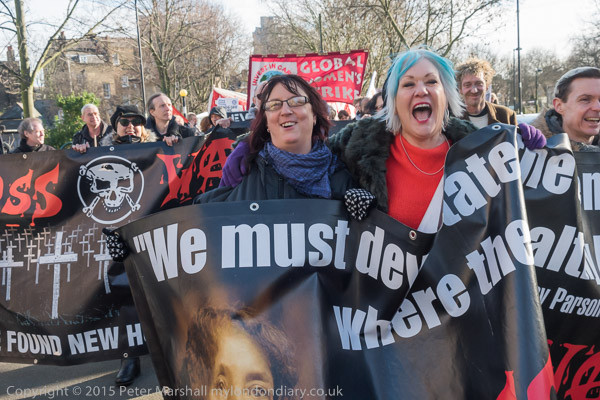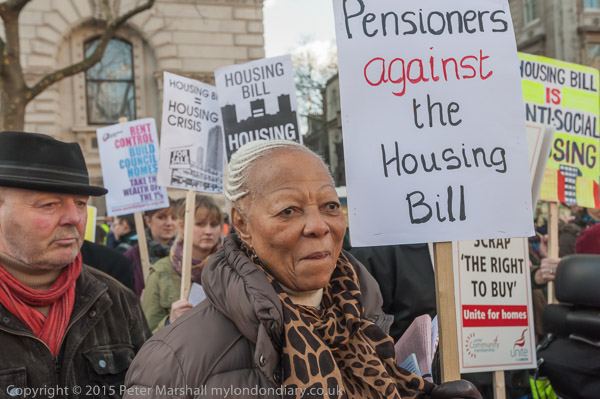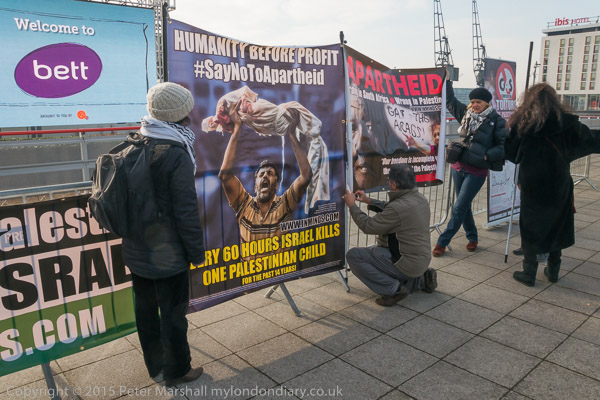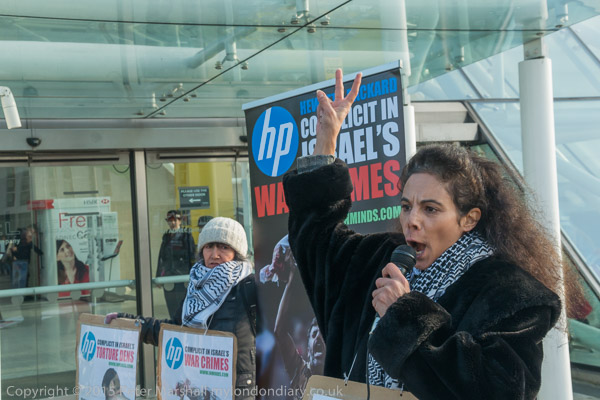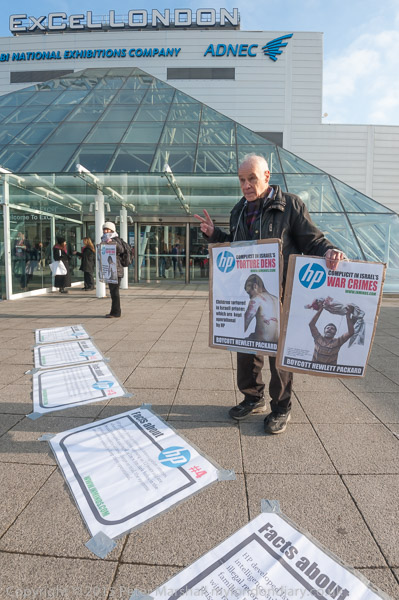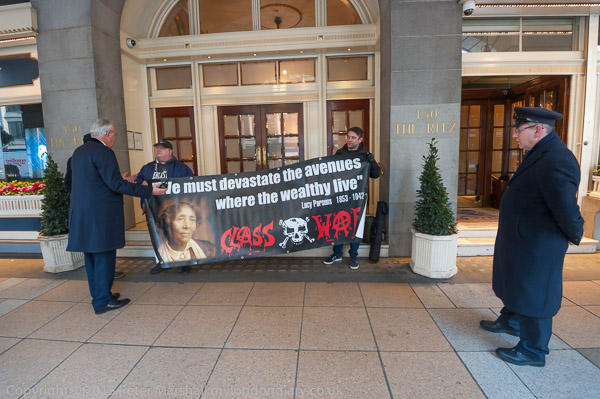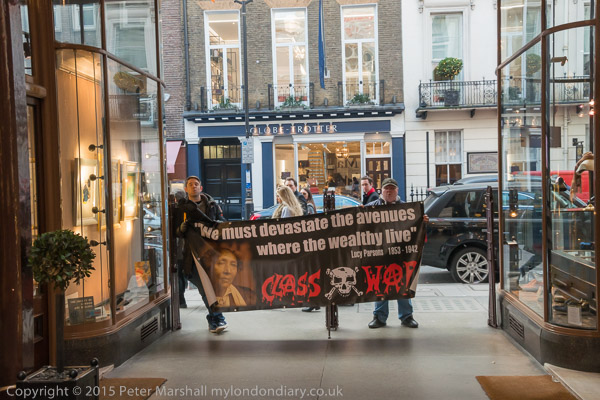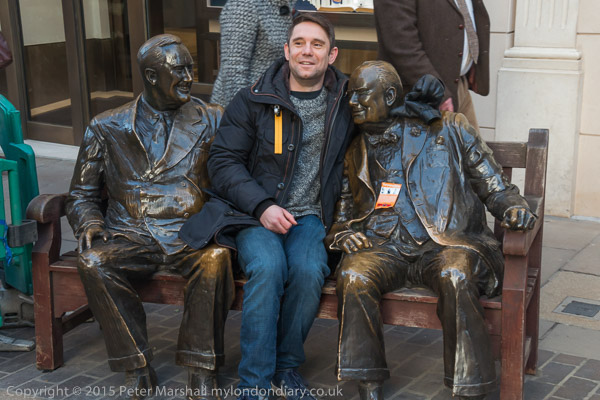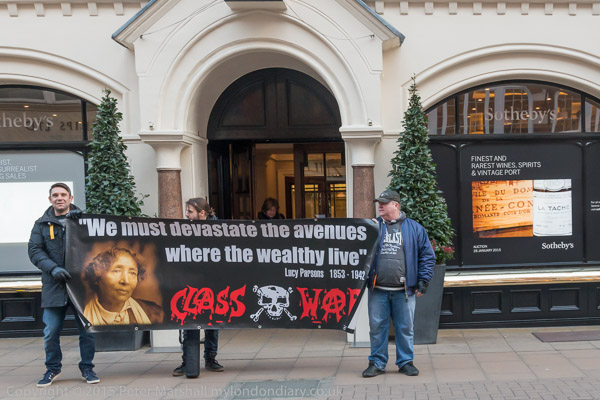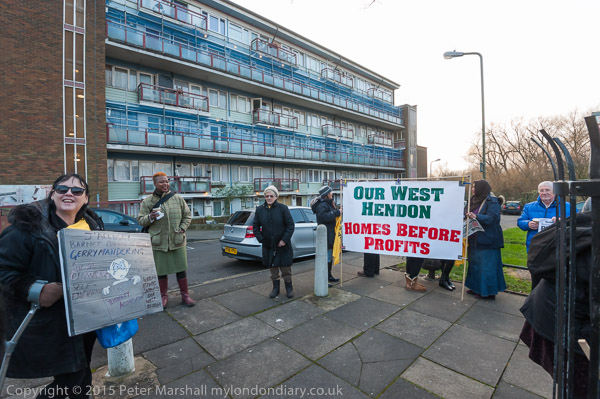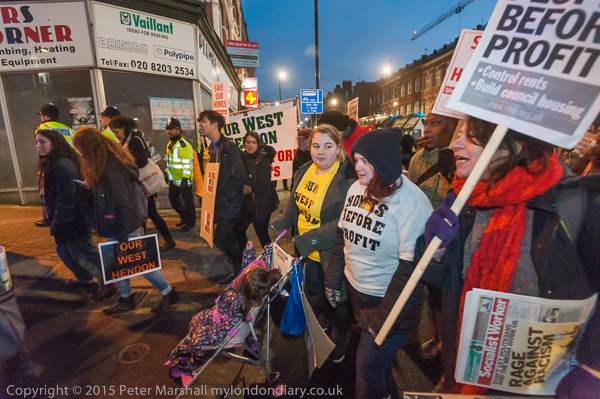People’s Assembly, English National Alliance, Dykes: Saturday 22nd June 2013 saw a major rally by the Peoples’ Assembly in Methodist Central Hall with smaller protests outside by Class War, Occupy and others and a small march by the English National Alliance march to lay flowers at the Cenotaph and take a letter to David Cameron. My photography ended for the day at the Dyke March London 2013.
People’s Assembly – Methodist Central Hall
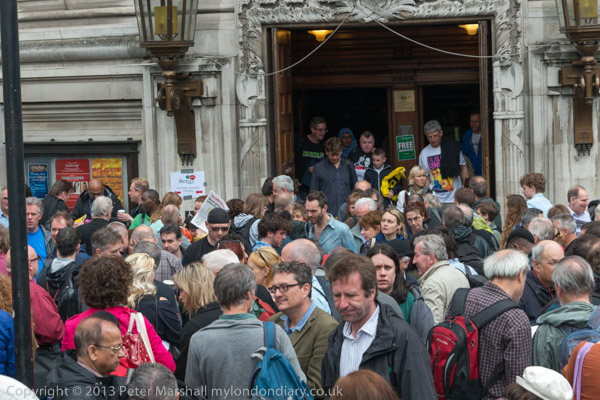
I didn’t actually go to the People’s Assembly but did take pictures of some of the people and groups outside and people as they come out from the event. It had seemed to me and to others that it had been deliberately organised as a ‘safety valve’ “used by the trade union establishment to “disperse some of the head of steam that had built up among the rank and file” rather like “the huge ‘Stop the War’ protest in Feb 2003, when leaders who were now prominent in the Assembly failed to take any decisive action – simply calling for another (and in the event rather smaller) protest a while after Blair had declared it was war. “
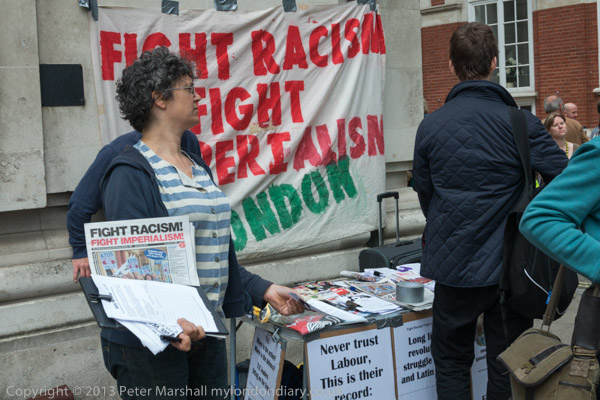
The events inside were “stage managed so that any criticism of the Labour Party and trade unions was banned from the main hall – with for example Ken Loach being told there was no room for him to speak at the plenary.” The groups I photographed outside were also denied any voice. This was clearly as I described it, a “Labour love-in“.
Class War – Action Not Talk?
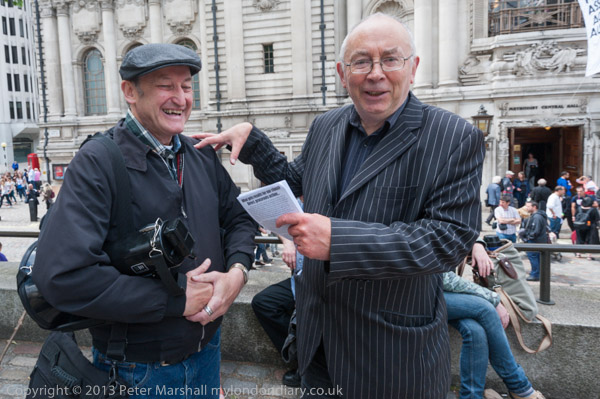
Ian Bone had called for “a f**king big mob outside” (my asterisks) the People’s Assembly, but the mob largely failed to turn up. Around enough for a football team. And in a questionable piece of timing his rally in the pulpit facing Methodist Central Hall started just a few minutes after the faithful had gone inside for another session of the “pointless jamboree“.
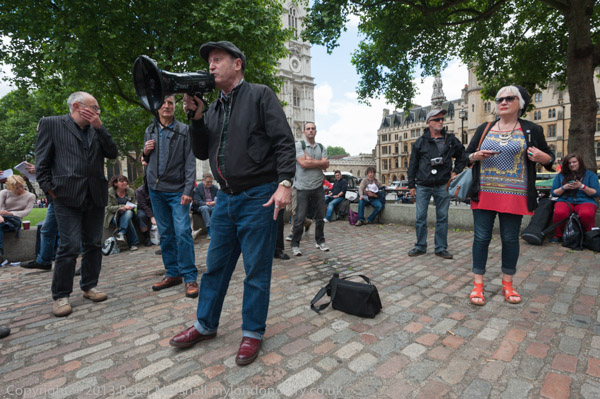
So Comrades Bone and Heath and the other speakers called for an end to talk talk, and for action on the streets following the examples of Turkey and Brazil to a largely empty London street. Even the Anonymous masked guys from Occupy couldn’t be bothered to leave their picnic to listen, though I found it amusing. And sad, because much of what was said was just too true.
Anonymous Occupy the Grass
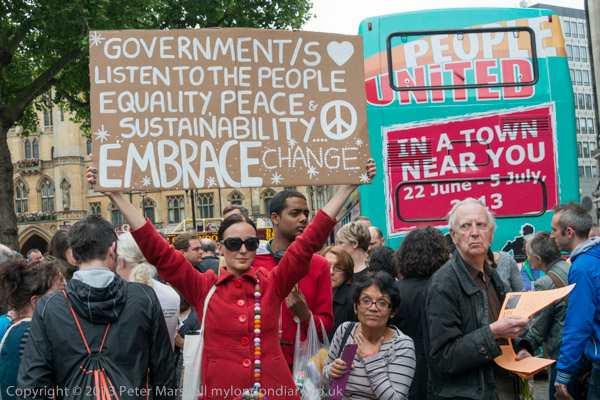
A small group of Occupy London supporters, some wearing ‘Anonymous’ masks handed out leaflets, offered free hugs, and had a picnic on the grass area outside the QEII centre in front of the People’s Assembly Against Austerity. There were also several other groups offering an alternative to the talk-shop going on inside Methodist Central Hall.

ENA Meet Left Opposition – Westminster
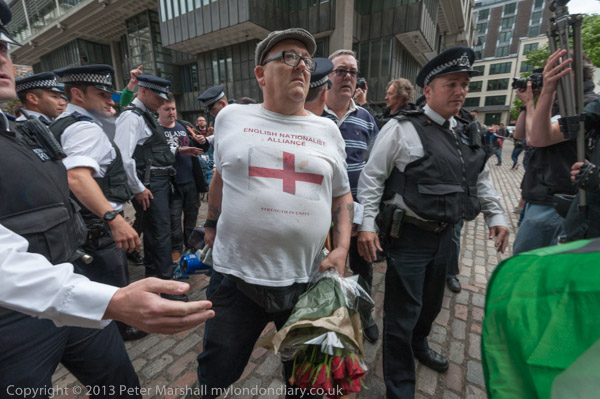
With a major left-wing event taking place in and around Methodist Central Hall it was probably not the best day for the extreme right English National Alliance to hold a march in Westminster, but it would have gone a little more smoothly if the police had not led them into the area filled with more radical small groups in front of the hall.
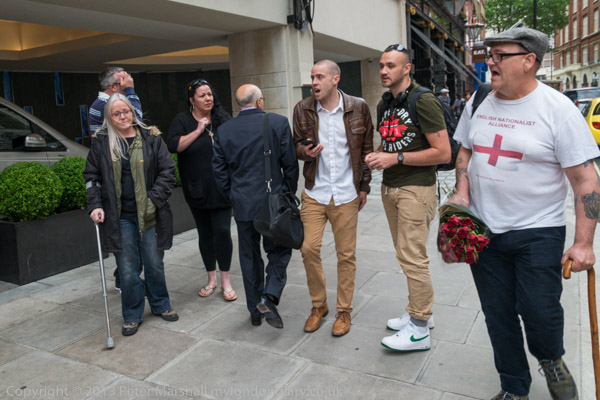
After the ENA had only gone a few yards into the area, some still shouting slogans including “No Surrender” they were surrounded by people shouting “Fascist scum!”, “Racists!” and some trying to bar their way. Police pushed them (and me) out of the way, but minor scuffles developed, with police making one arrest. A woman taking photographs told me she was hit by the stick one of the ENA was using.
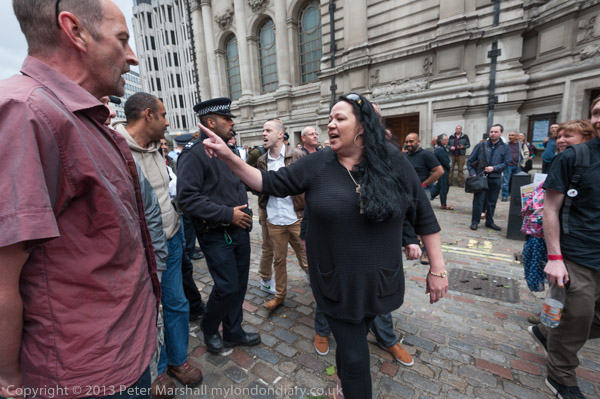
Police rushed the marchers into the area in front of the QEII conference centre and then back onto Broad Sanctuary to Parliament Square, with a few counter-protesters accompanying them and shouting. I went with them to the gates of Downing Street where I declined their request to go with Baker, but did take a copy of the statement they were intending to deliver to David Cameron.
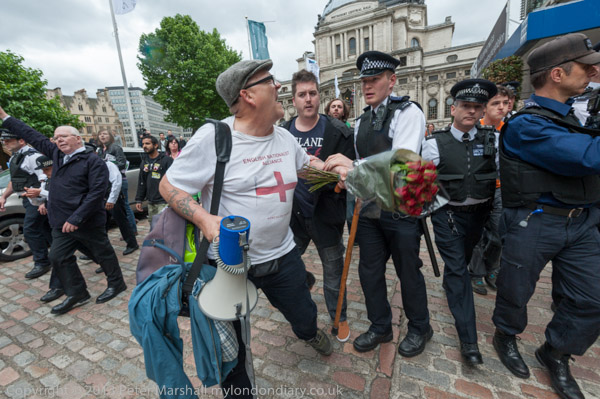
On My London Dairy I wrote more about the ENA and their complaints against the press as well as their policies. The start of the march was delayed as they waited for more to arrive (they didn’t) and we had a long discussion. I argued that accurate reporting was important and had that I tried hard to represent people’s views even when I don’t agree with them.
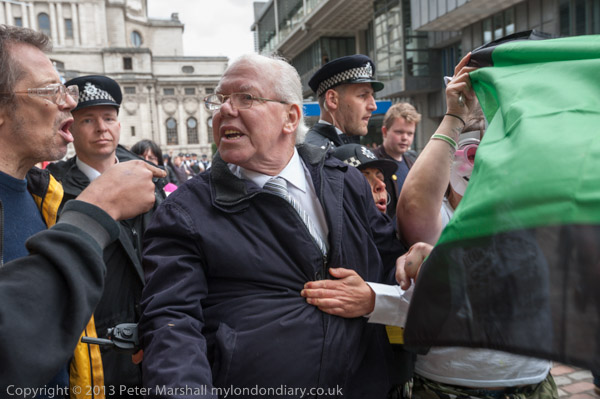
It was a sensibly conducted discussion but I was unable to convince them that the problems in housing were not caused by immigration by “the failure of successive governments to invest in social housing, exacerbated by the Thatcher’s right to buy policy and the subsidies to landlords through housing benefit.” Or that “Education is in a mess not because our pupils now have to learn about Muslims, or that we don’t teach British history (schools still do) but because of the failure of politicians to listen to those who know anything about it and a target-driven culture that mistakes better test results for better education etc.“
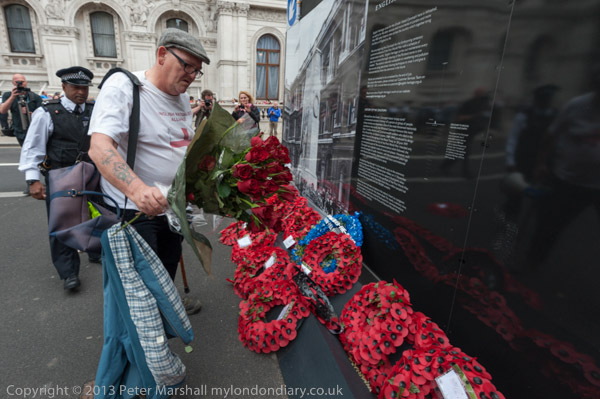
But I did try to present the views they expressed to Cameron in my piece on My London Diary, and I think these include some points the left might find surprising. As I concluded, “It seems to me to reflect a deeply felt dissatisfaction with changes in our society but to fail to see the real causes – largely class and capital – and instead to blame these on immigration and immigrants, who have enriched our society in so many ways through the ages and continue to do so.“
More at ENA Meet Left Opposition.
Dykes March – Berkeley Square to Soho

The previous year had seem the first Dyke March London for many years, but this years march had had less publicity and support and there were less than half as many people in Berkeley Sqaure for the start.
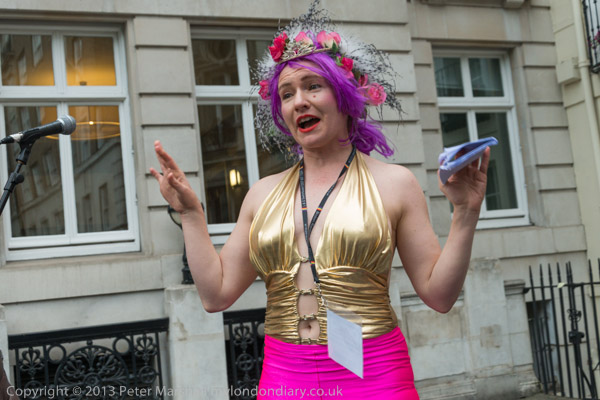
Speakers at the opening rally included the writer, critic, poet and deputy editor of the trans digital magazine META Roz Kaveney who read one of her poems, and founder of the UK’s LGBT History and long-standing LGBT activist Sue Sanders.

Sanders tested the crowd of several hundred women on their knowledge of lesbian icons such as Dame Ethel Smyth, a suffragette who was one of the better British composers of the twentieth century. I think I did better than average on her quiz.

From Berkeley Square the march went down to Piccadilly on its way to a rally in Soho Square, but I left them at Piccadilly Circus.
Flickr – Facebook – My London Diary – Hull Photos – Lea Valley – Paris
London’s Industrial Heritage – London Photos
All photographs on this page are copyright © Peter Marshall.
Contact me to buy prints or licence to reproduce.



